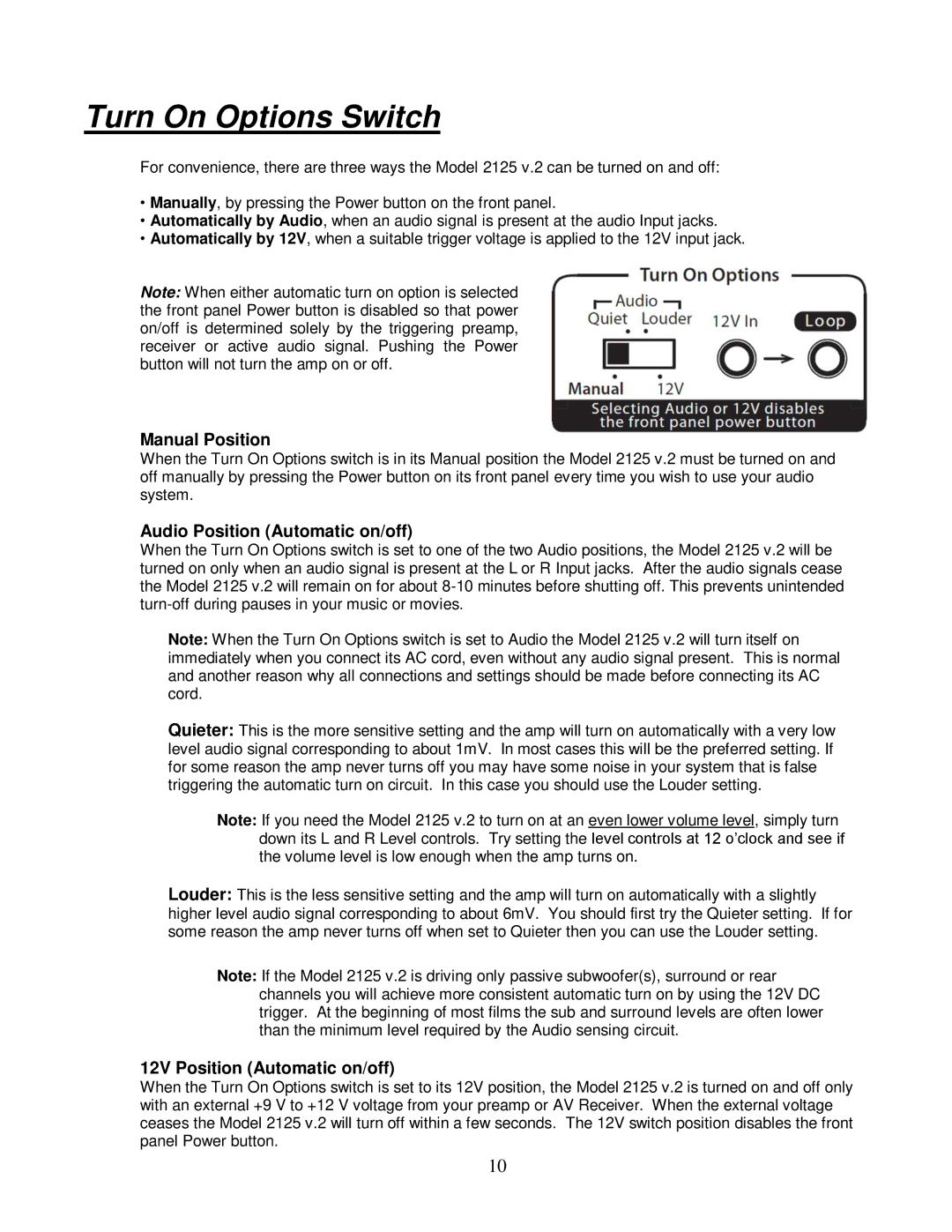2125 V.2 specifications
The Parasound 2125 V.2 amplifier stands out as a premier choice for audiophiles seeking high-quality sound reproduction combined with solid build quality. It is well-regarded for its ability to deliver powerful, clear audio while maintaining the signature warmth that is often associated with high-end audio equipment. With a sleek design and robust features, the 2125 V.2 is an excellent addition to any home theater or audio system.One of the primary features of the Parasound 2125 V.2 is its high-power output. The amplifier is capable of delivering 125 watts per channel into 8 ohms and 185 watts into 4 ohms, allowing it to drive a wide range of speakers with ease. This power output supports dynamic sound reproduction, crucial for producing the subtleties in both music and movie audio tracks.
The amplifier employs a linear power supply with a toroidal transformer, which is known for its efficiency and low noise. This design choice enhances the overall performance by reducing electromagnetic interference and ensuring a clean power delivery to the amplification stages. The use of high-quality components throughout the amplifier, such as durable capacitors and low-noise transistors, further contributes to its reliability and auditory fidelity.
In terms of technology, the Parasound 2125 V.2 incorporates a class AB amplifier topology. This hybrid design offers the benefits of both class A and class B amplifiers, delivering robust performance with minimal distortion. This results in a smooth, warm sound signature that is pleasing for extended listening sessions. The amplifier also features a low-frequency filter for optimized performance when used in home theater setups, allowing it to handle various audio formats without compromising on quality.
Additionally, the Parasound 2125 V.2 is equipped with a variety of connections, including balanced XLR inputs as well as unbalanced RCA inputs. This flexibility makes it easy to integrate the amplifier into different audio systems while ensuring compatibility with a wide range of equipment. For added versatility, the amplifier includes a trigger input, enabling remote operation when paired with compatible devices.
The build quality of the 2125 V.2 is another standout characteristic. Housed in a rigid metal chassis, the amplifier not only looks elegant but also protects its sensitive internal components. The front panel features a straightforward design with easy access to volume control and indicator lights that provide real-time feedback on the amplifier’s status.
In conclusion, the Parasound 2125 V.2 amplifier offers a potent blend of power, sound quality, and flexibility, making it an excellent choice for music lovers and cinephiles alike. Its well-thought-out design and engineering reflect Parasound's commitment to delivering exceptional audio equipment that can satisfy even the most discerning listeners.

